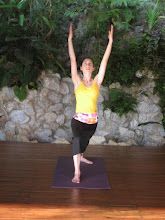
Ever wonder why the butter served in restaurants (with price ratings of $$$ or more) tastes so good? It could simply be the atmosphere cultivated by the (not your own) dining room & polished waitstaff, a special occasion that makes you swoon, or your expectations as a diner. A person who shies away from butter at home will naturally be delighted by the “real thing“ due to the heightened sensitivity of the senses that deprivation generates. For cooks & foodies who embrace the flavor of butter and appreciate its utility in baking, the type of butter served in upscale restaurants may explain the mystery. Professional chefs, bakers and gastronomes favor “European-style” butters over the “Sweet Cream” kind.
The USDA mandates that anything claiming to be ‘Real Butter’ must contain at least 80% fat (butter is just one of the many foods whose integrity is protected from imposter processed products by the government). Most “European-style” butters contain at least 82% and as much as 86% butterfat. In addition, the cream used is “cultured” (actually, soured) by the addition of lactic acid bacteria to enhance the flavor. One of the most popular brands of butter used in restaurants is Plugra. I personally prefer Organic Valley ‘Pasture Butter’ which is made with milk from cows that have actually grazed on grass. Animals raised on their natural herbivorous diet (not corn or other grains) are happier, healthier and actually pass on the nutrients found in grass (yup, grass contains vitamins A, E and beta-carotene) as well as healthy fats like conjugated linoleum acid (CLA) to the humans beings who drink their milk or eat their flesh.
I didn’t grow up eating butter, my mom bought Fleishman’s margarine because my father had high cholesterol (we didn’t know about transfats back then). Like many health-conscious Americans, I accepted the “Lipid Hypothesis” that saturated fat and cholesterol in the blood contibute to cardiovascular disease. Thankfully, I was introduced to the Weston A. Price Foundation which promotes the consumption of nutrient-dense foods through education, research and activism. They are not afraid to challenge politically-correct nutrition advice and protect farmers & consumers who prefer to produce and eat wholesome natural foods like raw milk, grass-fed beef and lacto-fermented vegetables.
I think I was actually most sold on the benefits of real butter by my interest in Ayurveda. The Weston A. Price Foundation introduced me to the facts about fat - that the human body NEEDS saturated fat (Mom, I am sorry that I never believed you when I was a teenager) and certain types of saturated fat offer amazing health benefits. And I could never quite swallow all the butter - no matter how good it tasted - that I was instructed to use in culinary school. However, the Ayurvedic concept that ghee aids digestion and pacifies Vata struck a cord (ghee is also used in Ayurvedic pharmacology as a vehicle for herbal medicines and in spiritual rituals). What a revelation: the clarified butter (butter in which the water and milk solids have been removed - the same thing as ghee) used in classic French cooking is good for you. Maybe this is the TRUE explaination behind the “French Paradox“?
While high quality, organic ghee is available in most grocery stores and on-line (such as Purity Farms brand), it is relatively easy to create the “pure essence of milk” out of butter in your own kitchen.
Ghee
1 pound unsalted butter, preferably organic
1 pound unsalted butter, preferably organic
Heat butter in heavy-bottomed stainless saucepan over medium heat. Allow butter to melt and simmer gently. Reduce heat to as low as possible to allow butter to simmer gently without risk of burning. Butter will foam and sputter as moisture evaporates and milk solids sink to bottom of pan. DO NOT STIR. Remove pan from heat as soon as ghee is done to prevent it from burning. The ghee is finished cooking when the color of the butter becomes a beautiful golden hue, it emits a pleasant popcorn-like smell and sputtering noises drop in tone and frequency (this is due to the complete evaporation of the butter's moisture content). Depending on the size of your pan and type of stove used, cooking time should be about 15 - 20 minutes. The milk curds on the bottom of the pan will take on a light tan color (the ghee has burned if the curds are allowed to brown). Allow ghee to cool until just warm. Pour ghee through a strainer lined with cheesecloth into a DRY & STERILIZED glass container. Allow ghee to cool completely before placing lid on top. Ghee may be stored at room temperature for several weeks or in the refrigerator for several months. This recipe yields about 1 3/4 cups.





Max made ghee the other week, but I don't think he cooked it long enough bc he was afraid of burning it. It tastes/smells more fragrant than regular butter, but not as much as ghee we buy at the store. We call it ghutter. (Half ghee, half butter)
ReplyDelete